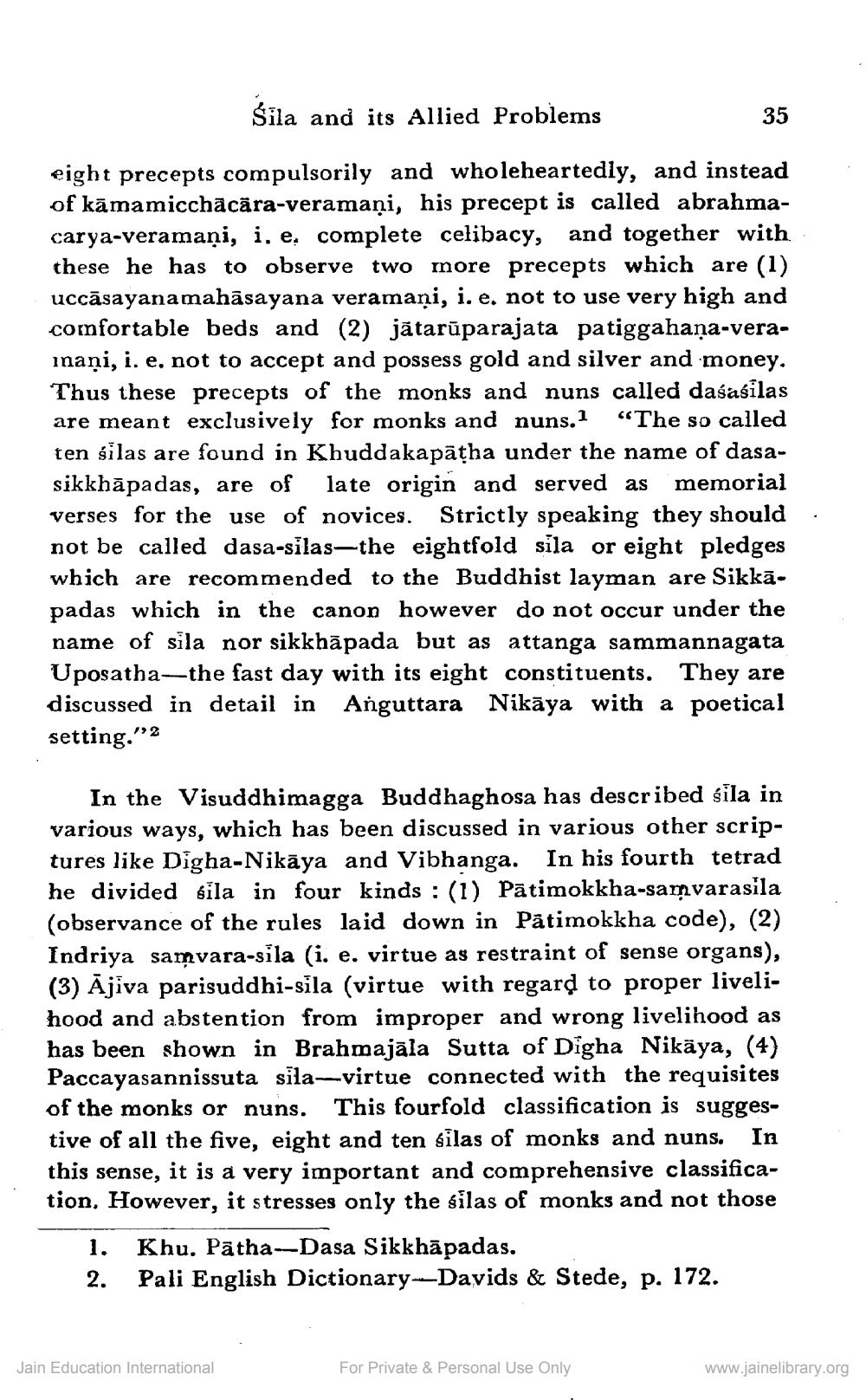________________
Śila and its Allied Problems
35
eight precepts compulsorily and wholeheartedly, and instead of kāmamicchācāra-veramaņi, his precept is called abrahmacarya-veramaņi, i. e, complete celibacy, and together with these he has to observe two more precepts which are (1) uccāsayanamahāsayana veramani, i. e. not to use very high and comfortable beds and (2) jātarūparajata patiggahaņa-verainani, i. e. not to accept and possess gold and silver and money. Thus these precepts of the monks and nuns called daśasilas are meant exclusively for monks and nuns. “The so called ten silas are found in Khuddakapātha under the name of dasasikkhāpadas, are of late origin and served as memorial verses for the use of novices. Strictly speaking they should not be called dasa-silas—the eightfold sila or eight pledges which are recommended to the Buddhist layman are Sikkā. padas which in the canon however do not occur under the name of sila nor sikkhāpada but as attanga sammannagata Uposatha--the fast day with its eight constituents. They are discussed in detail in Anguttara Nikāya with a poetical setting.”
.
In the Visuddhimagga Buddhaghosa has described sila in various ways, which has been discussed in various other scriptures like Digha-Nikāya and Vibhanga. In his fourth tetrad he divided sila in four kinds : (1) Pātimokkha-samvarasila (observance of the rules laid down in Pātimokkha code), (2) Indriya samvara-sila (i. e. virtue as restraint of sense organs), (3) Ājiva parisuddhi-sila (virtue with regard to proper livelihood and abstention from improper and wrong livelihood as has been shown in Brahmajāla Sutta of Digha Nikäya, (4) Paccayasannissuta sila-virtue connected with the requisites of the monks or nuns. This fourfold classification is suggestive of all the five, eight and ten silas of monks and nuns. In this sense, it is a very important and comprehensive classification. However, it stresses only the silas of monks and not those
1. Khu. Patha–Dasa Sikkhāpadas. 2. Pali English Dictionary-Davids & Stede, p. 172.
Jain Education International
For Private & Personal Use Only
www.jainelibrary.org




